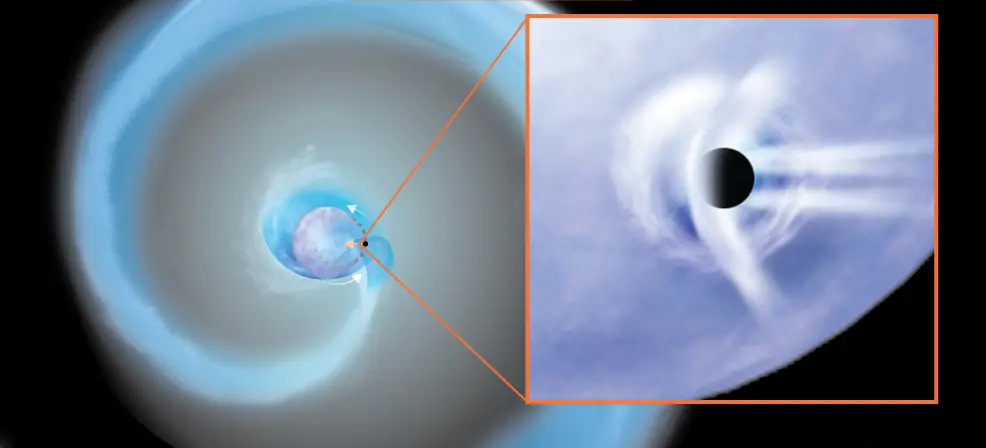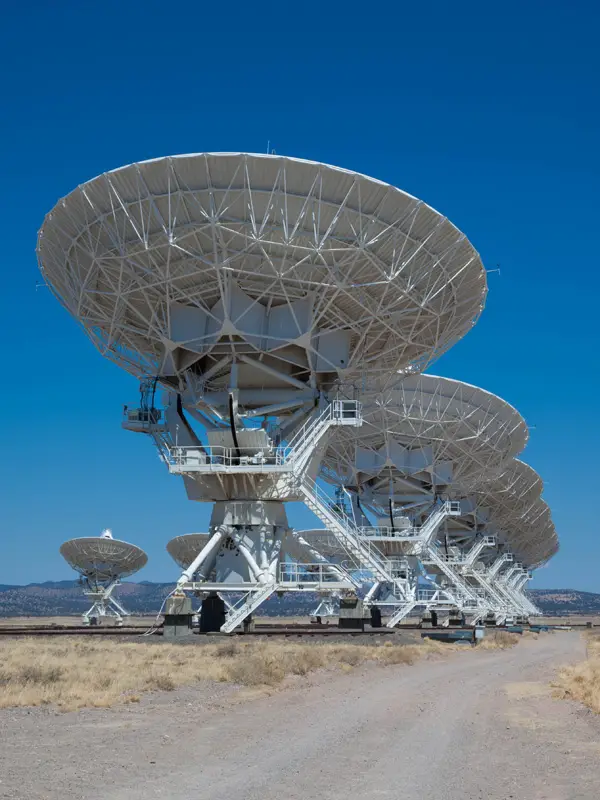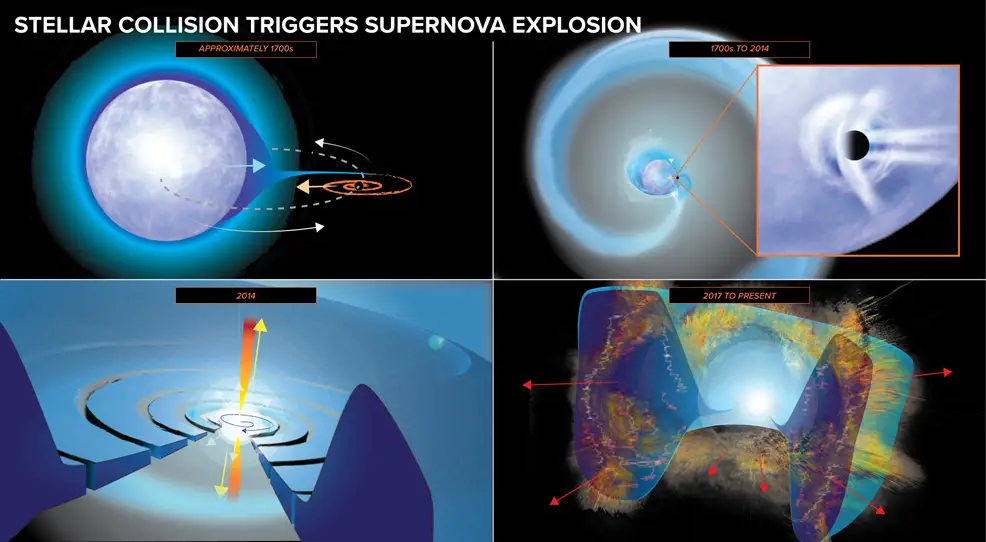
4th September 2021 New class of supernova discovered A new class of supernova has been observed by astronomers for the first time. The dramatic event is triggered by a black hole or neutron star crashing into the core of a companion star.
Until now, astronomers have divided supernovae into two main types: those involving the core collapse of very massive stars at the end of their lives, and those involving the accretion of material onto white dwarfs. A third type has now been confirmed, however, following the results of a multi-year project using the National Science Foundation's Very Large Array (VLA) in central New Mexico, USA. Researchers found strong evidence that a black hole or neutron star spiralled its way into the core of a companion star and caused that companion to explode. "Theorists had predicted that this could happen, but this is the first time we've actually seen such an event," said Dillon Dong, a graduate student at Caltech and lead author on a paper reporting the discovery in the journal Science. Dong's team analysed images from the Very Large Array Sky Survey (VLASS), which began observations in 2017. They found an object emitting radio waves but which had not appeared in an earlier VLA sky survey. Subsequent observations of the object – designated VT 1210+4956 – showed that the bright radio emission came from the outskirts of a dwarf galaxy some 480 million light-years from Earth. They later found that an instrument aboard the International Space Station had detected a burst of X-rays from the object in 2014.
The researchers' data allowed them to piece together a fascinating history of a centuries-long "death dance" between two massive stars. Like most stars that are much more massive than our Sun, these two were born as a binary pair, closely orbiting each other. The more massive of the two evolved through its normal, nuclear fusion-powered lifetime more quickly and exploded as a supernova – leaving behind either a black hole or super-dense neutron star. The black hole or neutron star's orbit grew steadily closer to its companion. Then, about 300 years ago, it entered the companion's atmosphere and started the death dance. At this point, the interaction began spraying gas away from the companion into space. The ejected gas, spiralling outward, formed an expanding, doughnut-shaped ring (called a torus) around the pair. Eventually, the black hole or neutron star made its way inward to the companion star's core, disrupting the nuclear fusion producing the energy that kept the core from collapsing of its own gravity. As the core collapsed, it briefly formed a disk of material closely orbiting the intruder and propelled a jet of material outward from the disk at speeds approaching that of light, drilling its way through the star. "That jet is what produced the X-rays seen by the MAXI instrument aboard the International Space Station, and this confirms the date of this event in 2014," explained Dong. The collapse of the star's core caused it to explode as a supernova, following its sibling's earlier explosion. "The companion star was going to explode eventually, but this merger accelerated the process," said Dong.
Click to enlarge
The material ejected by the 2014 supernova explosion moved much faster than the material thrown off earlier from the companion star, and by the time VLASS observed the object, the supernova blast was colliding with that material, causing powerful shocks that produced the bright radio emission seen by the VLA. "All the pieces of this puzzle fit together to tell this amazing story," said study co-author Gregg Hallinan. "The remnant of a star that exploded a long time ago plunged into its companion, causing it, too, to explode." The key to this discovery, Hallinan said, was VLASS, which is imaging about 80% of the sky, three times over seven years. One of the objectives of VLASS is to discover transient objects, such as supernova explosions, that emit brightly at radio wavelengths. This new supernova type, however, caused by a stellar merger, surprised the astronomers. They have named it a "merger-triggered core collapse supernova". "Of all the things we thought we would discover with VLASS, this was not one of them," added Hallinan.
Comments »
If you enjoyed this article, please consider sharing it:
|









